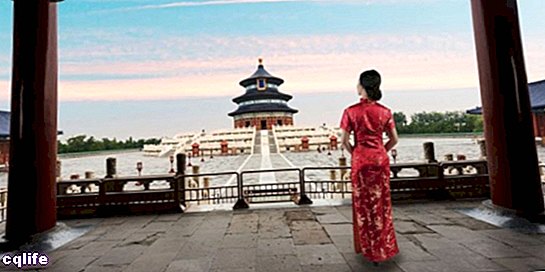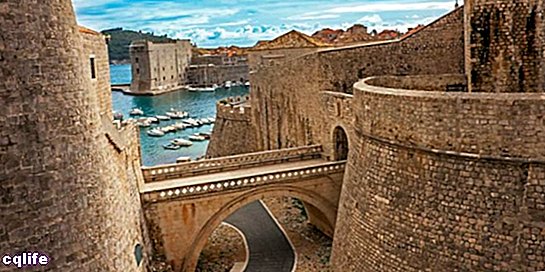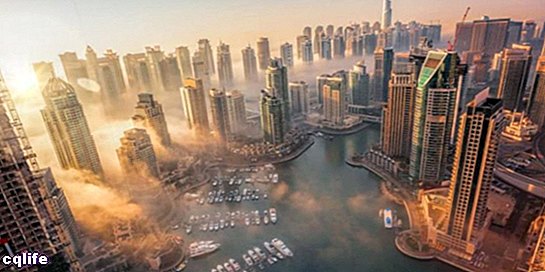- What is a cultural region?
- Characteristics of cultural regions
- Types of cultural region
- Cultural regions of the world
We explain what a cultural region is, what types exist and their characteristics. Also, the cultural regions of the world.

What is a cultural region?
A cultural region, cultural area or ethnographic area, is a territorial portion inhabited by groups humans that present homogeneous cultural elements, that is, related or similar, and that therefore can share important characteristics of identity. It is a concept used in the anthropology and in the geography.
Cultural regions are not equivalent to states nation, that is, to the countries, but a cultural region can cover only a portion of a country or have a presence in several countries at the same time. This is because the building of modern nations follows the complex historical processes that resulted in a culture.
In the field of anthropology, the concept of cultural area was coined in the first half of the 20th century, and widely used by Alfred Kroeber (1876-1960), one of the leading figures in the discipline in the United States. The concept has been rethought since then, but it continues to be extremely useful for the geographic organization of cities. populations human beings in the world, from the point of view of its cultural manifestations.
Characteristics of cultural regions

Cultural regions are characterized by:
- They present a certain degree of cultural homogeneity, or, failing that, of a social, political and territorial unit that allows the region to be considered as a specific geographic unit.
- Said cultural homogeneity can be determined by various factors: linguistic, religious, traditional, ethnic, etc.
- They have defined geographic-cultural boundaries, despite the fact that cultures They tend to be handled in more permeable terms, that is, with a tendency to miscegenation and overlap. Cultural purity is an abstract and unworkable concept.
- They rarely coincide with a nation's political boundaries, stretching across parts of the world. territory (or the totality of it) of several nations, or different regions coexisting within the same country.
Types of cultural region
Cultural regions can be classified into:
- Formal, when they consist of relatively homogeneous cultural groups, despite the fact that their cultural boundaries cannot be clearly traced, due to the tendency of cultures to intermingle. But they do present a defined nucleus or center in which cultural traits are more definable.
- Functional, when they do not present much cultural homogeneity, but rather a grouping of cultures that are managed socially, politically and / or economically in a unitary way, that is, as a unified whole. This occurs in regions of enormous ethnic, religious or linguistic diversity.
- Popular, when it comes to self-defined cultural regions, that is, defined by their own inhabitants, based on precise and fixed limits, very well identified. In them, a very strong and deeply rooted concept of identity is usually defended, through the traditions, of folklore, etc.
Cultural regions of the world

The Middle East has been a source of immense oil riches.
The great cultural regions of the world, considered from a panoramic perspective, tend to be considered as the following:
- The Anglo American. Defined by the predominance of the English-speaking, the Caucasian race and the Protestant Christian tradition, it is a region with a high level of industrialization, and rapidly advancing towards becoming a society multicultural, given the very high level of migration it experiences.
- Latin America and the Caribbean. A region of immense ethnic diversity as a result of miscegenation, a consequence in turn of the centuries of European colonization (mainly Spanish, Portuguese and French) and of the historical migration forced of African slaves. Latin America is predominantly Catholic and mostly Spanish or Portuguese speaking, but they also survive traditions, traditions and native or original languages, as well as of African origin, in this gigantic melting pot
- The Maghreb. Mediterranean African region dominated by the Islam and the Arab language and ethnic group, with the relative cultural and ethnic homogeneity that comes from the ancient Berbers. Around 86 million people are concentrated in this region, and it encompasses areas of historical importance such as Egypt.
- Sub-Saharan Africa. It is a region of great cultural diversity, although there is a total predominance of black African ethnic groups, many of whom do not share a language or religion, nor customs, but they are often forced to coexist due to the political distribution carried out by the European colonies established during the 19th century. Native religions coexist with Islam, in this area of high social and political conflict, as well as regions of immense poverty. It stands out among all of South Africa, ruled for much of its recent history by a white caste descended from European settlers, and currently reaching levels of industrialization above average.
- The Europe Mediterranean. Formed by the western cultures that emerged around the Mediterranean Sea and its surroundings, they are mainly related by their historical descent from the Roman Empire of the antiquity, which is manifested in their Romance languages, and by their Christian religious tradition, especially on the Catholic side. The Caucasian race predominates, although with an important presence of African and Middle Eastern migrants, and together with Germanic or Nordic Europe, it constitutes the former imperial center of the West, which today provides them with a multicultural existence.
- Nordic Europe. Mostly Caucasian and Protestant Christian, it is the most prosperous and industrialized European cultural region, dominated by languages of Germanic or Scandinavian origin. Many of the nations whose territory the region encompasses were colonial and imperial powers, and today constitute countries with a very high standard of living.
- The Balkans and Eastern Europe. Another region of immense linguistic and religious variety, but whose population is fundamentally of Slavic origin. It is the cradle of Orthodox Christianity, despite the fact that Islam also has an important presence, and has witnessed important warlike conflicts throughout its history, since it serves as a bridge between cultural regions as dissimilar as Europe, Asia and the Middle East.
- The middle east. Also called the “Middle East”, it is a cultural region of immense importance for the history of human civilization, given that the first ancient peoples of the Mesopotamia. Most of its population today is Arab and Muslim, so it is a more or less uniform region, although with significant political and sectarian differences. Since the 20th century, the region has been a source of immense oil wealth, and has been a major source of global tension after the creation of the State of Israel in Palestinian territory.
- The Indian subcontinent. One of the oldest cultural regions in the world, heir to the Indus Valley civilization (Indo-Aryan peoples) and the cradle of the Hindu religion. Its population is ethnically uniform, although deeply divided on religious grounds (due to the presence of Islam and to a lesser extent Buddhism and Sikhism). It is a region of deep social and economic inequalities, with regions entirely dedicated to the farming and others, on the other hand, highly industrialized.
- Southeast Asia. Covering the whole of the nations of ancient Indochina and Asia Minor, it is the Asian region with the largest diversity ethnic and linguistic origin, origin of an important number of linguistic roots of the continent whole.The Malay, East Asian and Black peoples coexist in the region, the latter being the oldest to populate the region. More than 593 million people inhabit this region, despite much of its geography is mostly insular.
- Asiatic Russia. This region includes very different Asian peoples, whose greatest common historical precedent is having been part of the ancient Union of Soviet Socialist Republics (USSR). The region is multiracial, encompassing nomadic and sedentary communities, descendants of ancient Turkic or Mongolian peoples, in which Islam is the predominant religion.
- The Far East. Ethnically uniform, this is the most geographically distant cultural region from the West, made up of people with slanted eyes and yellow complexions, phenotype characteristic of Asia major. However, it is a linguistically very diverse region, with the presence of languages such as Korean, Tibetan, Mongolian, Japanese or the great variety of languages spoken in China, of which Mandarin is just one. These peoples inhabit some of the most overpopulated nations in the world, among which China and Japan stand out, highly industrialized. The majority religion is Buddhism, in its different aspects, although it coexists with Taoism, Sikhism and local traditional religions.
- Australasia. Geographically composed of Oceania and Micronesia, it is a region whose native culture is Maori, still present in different countries despite the colonization of these lands by the British Empire. In fact, some of these nations are still part of the Commonwealth of the United Kingdom, and therefore are culturally related to Europe. The Caucasian population has a strong presence in Australia and New Zealand, especially.
